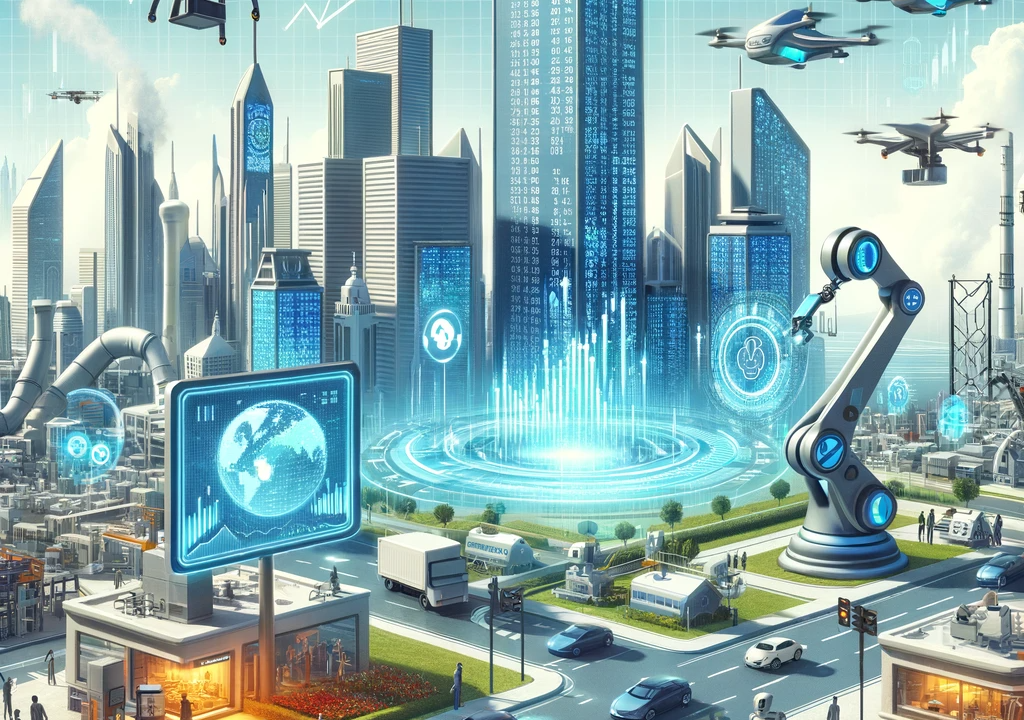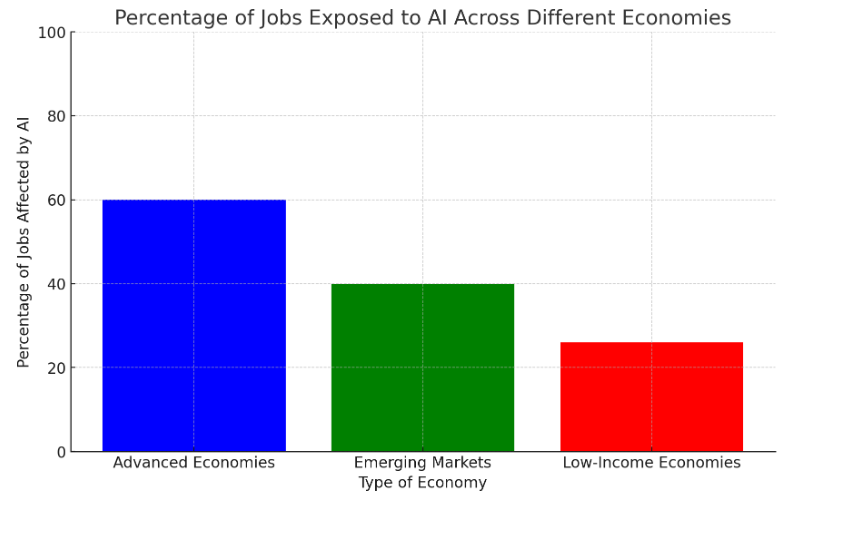
According to the latest report from the International Monetary Fund (IMF), artificial intelligence (AI) is expected to impact up to 40% of jobs globally. This impact is anticipated to be more significant in advanced economies, where about 60% of roles could be affected by AI. The report suggests that while half of these workers might benefit from AI through increased productivity, the other half could face challenges such as lower salaries, reduced hiring, and in extreme cases, job displacement. The IMF emphasizes the unique nature of AI in its ability to impact not only routine tasks but also high-skilled jobs that involve nuanced judgment and creative problem-solving. This development could potentially worsen inequality both within and between nations, highlighting the need for comprehensive policies to address these challenges and make the AI transition more inclusive.

The above graph illustrating the percentage of jobs exposed to AI in different types of economies, based on the latest IMF report. As shown, 60% of jobs in advanced economies are affected by AI, compared to 40% in emerging markets, and 26% in low-income economies. However The advent of Artificial Intelligence (AI) has heralded a new era in technology, offering remarkable opportunities in various sectors. This rapid advancement also poses significant challenges, particularly concerning job inequality. AI’s influence on the workforce is a double-edged sword; while it can create new job opportunities and increase efficiency in certain sectors, it also has the potential to exacerbate inequality by displacing workers in others.
1. Job Creation and Efficiency Enhancement:
AI has the potential to create new jobs in tech-driven industries. Positions like AI specialists, data analysts, and robotics engineers are in high demand. In industries such as healthcare, AI aids in diagnostic procedures, enhancing the efficiency and effectiveness of medical professionals. In sectors like banking, AI-driven algorithms improve customer service and fraud detection, leading to more specialised roles focusing on overseeing and improving AI systems.
2. Job Displacement and Skill Gap:
Conversely, AI can displace workers in industries heavily reliant on routine and repetitive tasks. Manufacturing, for example, has seen a significant shift with the introduction of AI-driven automation, reducing the need for human labour. This displacement is not limited to manual labour; AI algorithms can perform certain administrative and clerical tasks more efficiently than humans, impacting jobs in these areas as well. This creates a skill gap, as workers displaced by AI often lack the necessary training to transition into the tech-focused jobs being created.
3. Widening Economic Inequality:
The disparity in AI’s impact on different sectors can exacerbate economic inequality. High-skilled workers with AI-related expertise can command lucrative salaries, while low-skilled workers may struggle to find stable employment. This divide can lead to a concentration of wealth in tech-driven industries, while traditional sectors may see a decline in job opportunities and wages.
4. Geographical Disparities:
AI’s impact on jobs also varies geographically. Regions with a strong focus on technology and innovation may see significant job growth, while areas reliant on traditional industries may suffer job losses. This can lead to increased regional economic disparities, with certain areas thriving and others declining.
5. Policy Implications and Future Outlook:
Addressing the challenges posed by AI requires thoughtful policy intervention. Education and training programs need to be restructured to equip the workforce with AI-relevant skills. Additionally, there is a need for policies that support workers displaced by AI, including job transition programs and social safety nets. As AI continues to evolve, it is crucial that these policies are revisited and adapted to ensure that the benefits of AI are equitably distributed across society.
Conclusion:
AI’s impact on job inequality is a complex issue that requires a multifaceted approach. While AI presents opportunities for growth and efficiency, it also poses significant challenges in terms of job displacement and economic disparity. Balancing these aspects is crucial for ensuring that AI serves as a tool for positive change, rather than exacerbating existing inequalities. The future will likely see a continued evolution of AI, and it is imperative that society prepares adequately to harness its benefits while mitigating its negative impacts.






No Comments